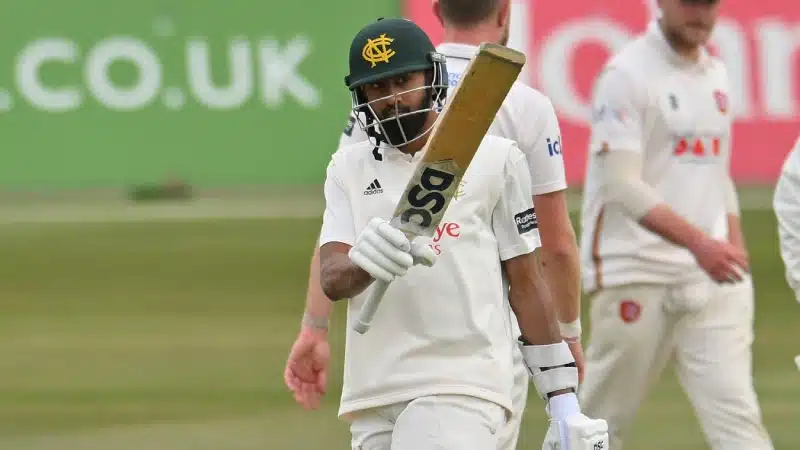
Most of the time the number 11 batsman making it to the crease in Tests is looked upon as a formality by the opposition bowlers and fielders who are eager to bundle out their opponents at an earliest given opportunity. However, over the years, Test cricket has provided us innumerable examples of lower-order batsmen coming to the rescue for their teams in the most unlikely circumstances. Here, we have a look at some of the best Test knocks by a number 11 batsmen.
Ashton Agar’s 98 against England
Ashton Agar’s Test debut in the opening match of Australia’s tour of England and Scotland in 2013 was one for the ages even though he would have been disappointed that the Aussies ended up on the losing side. Walking into the middle during Australia’s first innings with the score reading 9 for 117 after England had already posted 215 in their first innings, Agar went on to mesmerize spectators by putting on a 163-run partnership with Phillip Hughes.
He seemed to play without any debutant nerves, smashing 12 fours and two sixes en-route to a 101-ball 98. Unfortunately for Australia, they went on to lose the match following an improved batting display by England in the second innings. However, Agar’s heroics at number 11 during the Test doesn’t seem like it will be forgotten in a hurry.
Tino Best’s 95 against England
West Indian speedster Tino Best also scored his highest Test score while batting at 11 against England. Best made 95 for West Indies having walked into the middle as their last batsman with the score on 9 for 283 in the third Test between the teams in the 2012 tour of England. To everyone’s surprise, Best looked unperturbed against England’s bowlers and went on to stitch together a partnership of 143 with Denesh Ramdin, who scored an unbeaten 107.
Best’s knock saw him hit 14 fours and a six as he notched 95 from 112 balls at a strike rate of 84.82. His innings helped West Indies score a formidable 426, which went a long way towards them drawing the match. He also took two wickets for the team with the ball in hand and was deservedly adjudged the Player of the Match.
James Anderson’s 81 against India
While England’s bowlers have endured their fair share of struggles against tailenders, it must be said that their lower order has inflicted a lot of misery on opponents as well. Perhaps the best example of such an innings is James Anderson’s 81 in the first Test of India’s 2014 tour of England. After India had put 457 on the scoreboard in their first innings, England looked in all sorts of trouble when Anderson walked to the crease with the scoreboard showing the hosts reeling at 9 for 298.
Little did anyone know then that Anderson was in no mood to throw in the towel without a fight as he went on to score his highest Test score. He made 81 against India’s frustrated bowlers and was a part of a 198-run stand with Joe Root. Anderson hit 17 boundaries and also claimed four wickets in the match to bag the Player of the Match award as the Test ended in a draw.
Zaheer Khan’s 75 against Bangladesh
Unlike Anderson, Zaheer Khan’s highest Test knock came in a winning cause for his team. The Indian pacer had already left his mark in the opening innings of the first Test during India’s tour of Bangladesh in 2004. He had claimed two wickets as India bundled out the hosts for 184 without breaking much sweat. However, it was Zaheer’s performance with the bat in India’s first innings that came as a surprise to many.
He made 75 from 115 deliveries after hitting 10 fours and a couple of maximums. His knock helped take India’s total from 393 to 526 as he ended up being the perfect foil for Sachin Tendulkar, who made an unbeaten 248 from the other end. Zaheer and Tendulkar eventually put on a 133-run stand together and the former also claimed his third scalp of the Test in Bangladesh’s second innings with India going on to record a comfortable win by an innings and 140 runs.
Richard Collinge’s 68* against Pakistan
The oldest knock by a number 11 on this list, Richard Collinge’s unbeaten 68 came against Pakistan in the third Test of the Asian's tour of New Zealand in 1973. The left-arm medium-fast bowler walked in with the score on 9 for 251 for the Kiwis after Pakistan had already posted 402 in their first innings. However, instead of throwing away his wicket in fashion with most tailenders at the time, Collinge dug deep and put together a 151-run partnership with Brian Hastings, who scored 110 the innings.
Collinge’s unbeaten 68 though cannot be understated and was crucial in New Zealand also scoring 402 in their first innings. He hit six fours as well as a maximum during his knock and proved to be a source of frustration for Pakistan’s bowlers. Collinge also took four wickets – two in each innings – in the match, which ended in a draw.
Feature image courtesy: AFP / Andrew Yates




















